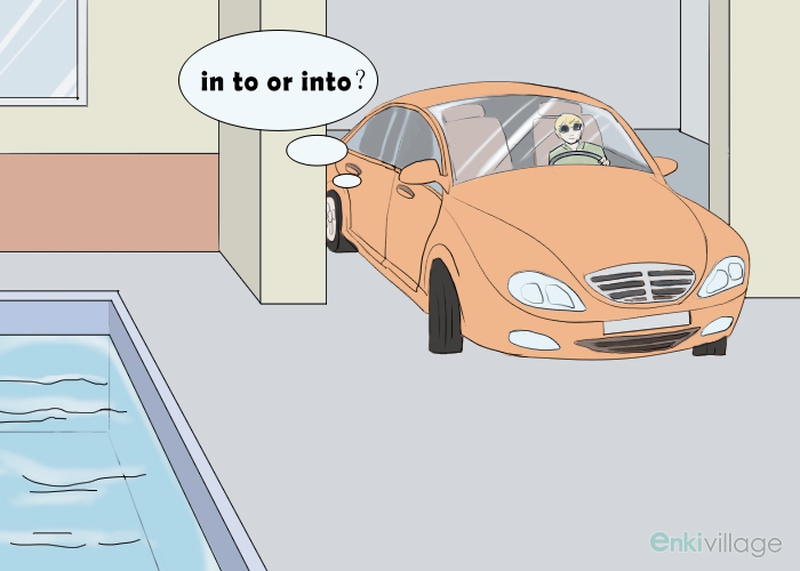A befuddlement of many writers is when to use “into,” which is one word, or “in to,” which is two words. Although they sound the same when spoken and look similar when written, they can mean very different things.

In To or Into: What's the Difference?
One way of knowing when to use “in to” or “into” is to understand that they are two completely different words that have little in common. Most of the time, “in to” is an adverb “in” which is followed by preposition “to.” When this is used, “in to” occurs merely because of the way the sentence is written and “in to” can be thought of being synonymous with “in order to.”
Take the following example, “I went in to ask for directions.” In this sentence, see if “in to” can be replaced with “in order to” and if the sentence still makes sense and means the same thing. After replacement, the sentence “I went in order to ask for directions” still makes sense.
Unfortunately, like many other rules for the English language, this rule of thumb has exceptions. For example:
She turned the book in to the library.
The crowd refused to return their unused tickets in to the front office after the show.
The family refused to give in to the captors’ ransom demands.
In these sentences, "in" is often a part of a phrase, like "turn in" or "give in". "To", on the other hand, is closely attached to the phrases behind it.
The word “into” is a preposition that is used to indicate motion in the direction of the interior of a location. “Into” used in a sentence can be thought of as answering the question of where something is or is heading. For example:
The bug crawled into the sandwich bag.
The boat was driven into the dry dock at low speed.
The athlete threw his tennis racket into the crowd.
In or Into: What's the Difference?
In addition to the confusion over when to use “in to” or “into,” writers sometimes misunderstand when to use “in” and when to use “into.” The general rule of thumb is that “in” should be used when discussing the position of an object. On the other hand, “in to” should be used to discuss the direction or final destination of an object. For example:
The car was parked in the garage
---The car was headed into the garage.
The book sat inside the locker
---The student placed the book into the locker.
He is already at work in his office.
---He is already parked and heading into his office building.

View All Comments /Add Comment